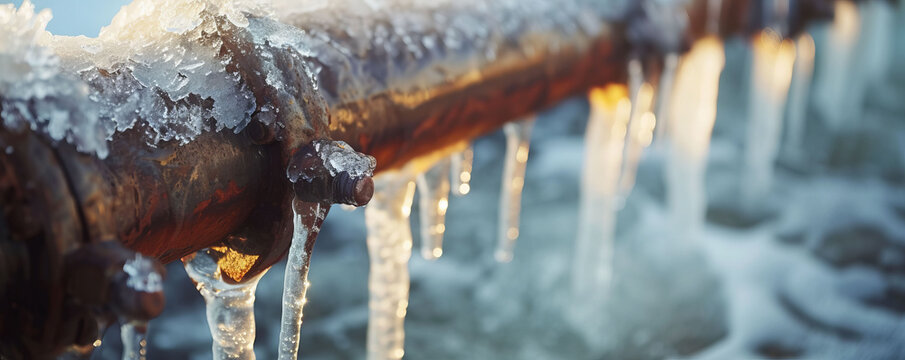Guidance for Preventing Frozen Plumbing in Winter: Specialist Advice
InformationWere you in search of content on Winter Plumbing Precautions: Preventing Frozen Pipes?

Winter can damage your pipes, especially by freezing pipelines. Below's just how to prevent it from occurring and what to do if it does.
Intro
As temperatures drop, the danger of icy pipelines boosts, possibly resulting in pricey repair work and water damage. Comprehending how to stop frozen pipes is critical for property owners in chilly environments.
Understanding Frozen Pipes
What triggers pipelines to ice up?
Pipelines ice up when revealed to temperatures below 32 ° F (0 ° C) for extended periods. As water inside the pipes freezes, it expands, putting pressure on the pipe walls and potentially causing them to burst.
Risks and problems
Icy pipelines can cause water disturbances, property damages, and pricey repair work. Burst pipelines can flooding homes and trigger comprehensive architectural damage.
Indications of Frozen Piping
Identifying frozen pipes early can avoid them from breaking.
How to recognize frozen pipelines
Try to find decreased water circulation from faucets, unusual smells or noises from pipelines, and visible frost on subjected pipelines.
Avoidance Tips
Protecting prone pipes
Cover pipelines in insulation sleeves or make use of warm tape to safeguard them from freezing temperatures. Concentrate on pipelines in unheated or outside areas of the home.
Home heating techniques
Keep indoor areas adequately heated, specifically locations with plumbing. Open up cabinet doors to allow cozy air to circulate around pipes under sinks.
Safeguarding Outside Plumbing
Yard hose pipes and outdoor taps
Disconnect and drain garden tubes before winter season. Install frost-proof spigots or cover outside taps with insulated caps.
What to Do If Your Pipes Freeze
Immediate actions to take
If you presume frozen pipelines, maintain faucets available to eliminate pressure as the ice thaws. Use a hairdryer or towels soaked in hot water to thaw pipelines slowly.
Long-Term Solutions
Structural changes
Consider rerouting pipes away from exterior walls or unheated locations. Include additional insulation to attic rooms, cellars, and crawl spaces.
Upgrading insulation
Purchase premium insulation for pipes, attic rooms, and wall surfaces. Proper insulation aids maintain regular temperature levels and lowers the risk of icy pipelines.
Final thought
Protecting against frozen pipes calls for proactive steps and fast responses. By comprehending the causes, indications, and safety nets, home owners can safeguard their plumbing throughout cold weather.
6 Proven Ways to Prevent Frozen Pipes and Protect Your Home
Disconnect and Drain Garden Hoses
Before winter arrives, start by disconnecting your garden hoses and draining any remaining water. Close the shut-off valves that supply outdoor hose bibs and leave the outdoor faucet open to allow any residual water to drain. For extra protection, consider using faucet covers throughout the colder months. It’s also important to drain water from any sprinkler supply lines following the manufacturer’s directions.
Insulate Exposed Pipes
Insulating your pipes is an effective way to prevent freezing. Pipe insulation is readily available at home improvement stores and is relatively inexpensive. Pay close attention to pipes in unheated areas such as the attic, basement, crawl spaces, or garage. Apply foam insulation generously to create a buffer against the cold. You can also wrap your pipes in heat tape or thermostat-controlled heat cables for added warmth.
Seal Air Leaks
Inspect your home for any cracks or openings that could let in cold air. Seal any holes around the piping in interior or exterior walls, as well as the sill plates where your home rests on its foundation. Additionally, make sure to keep your garage door closed unless you’re entering or exiting. Leaving it open creates a significant air leak that can lead to frozen pipes.
Allow Warm Air Circulation
During cold snaps, it’s essential to allow warm air to circulate evenly throughout your home. Leave interior doors ajar to promote better airflow. Open kitchen and bathroom cabinets to help distribute heat consistently around the rooms. If you have small children or pets, be sure to remove any household chemicals or potentially harmful cleaners from open cabinets for safety.
Let Faucets Drip
A small trickle of water can make a big difference in preventing ice formation inside your pipes. When temperatures drop significantly, start a drip of water from all faucets served by exposed pipes. This continuous flow helps prevent the water from freezing. Additionally, running a few faucets slightly can relieve pressure inside the pipes, reducing the chances of a rupture if the water inside does freeze.
https://choateshvac.com/6-proven-ways-to-prevent-frozen-pipes-and-protect-your-home/

We had been made aware of that editorial about How to Prevent Your Pipes From Freezing from an acquaintance on another website. Sharing is caring. Helping others is fun. Many thanks for going through it.
This Resource